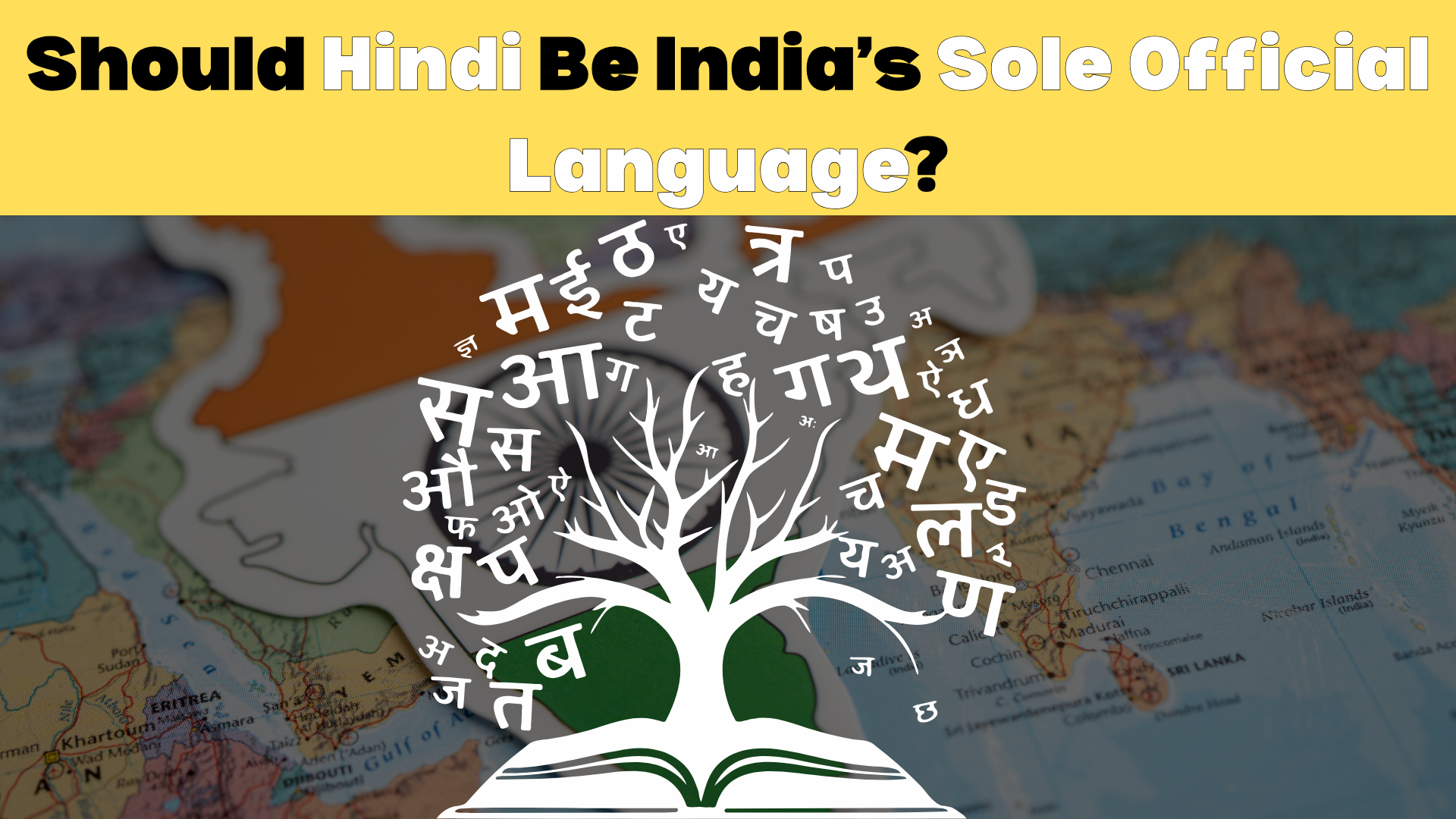Should Hindi Be India’s Sole Official Language? A Bold, Honest Look
Imagine this: You walk into a government office in Chennai, but the forms are only in Hindi. You turn on the TV in Kolkata again, only Hindi channels. Sounds unfair? That’s the fear many have as debates around making Hindi the sole official language of India heat up again.
Right now, both Hindi and English serve as official languages of the Union government. But should Hindi go solo?
Let’s break it all down no politics, just plain facts, powerful stats, and people’s voices so you can decide where you stand.
Why Hindi? Arguments For One National Language
1. It’s the Most Widely Spoken Language in India
- 528 million Indians speak Hindi as their first language (2011 Census).
- Another 120 million speak it as a second/third language.
- In total: 648 million+ (around 57% of India’s population).
- It’s the main language in 11 populous states like Uttar Pradesh, Madhya Pradesh, Bihar, and Rajasthan.
👉 That’s more than the entire population of the European Union!
2. Hindi Binds India Together
- During the freedom movement, leaders like Mahatma Gandhi promoted Hindustani (Hindi + Urdu) as a common language to unify the nation.
- Today, Hindi acts as a “link language” across North and Central India, helping people from different states connect.
3. It Can Save Time & Government Money
- ₹1,200 crore is spent every year translating documents between Hindi and English (Ministry of Home Affairs, 2024).
- A single-language system could reduce red tape and speed up official processes at least in Hindi-speaking states.
4. Cultural Powerhouse
- Bollywood, TV soaps, songs, memes Hindi dominates!
- Hindi movies reach 2.5 billion viewers globally every year.
- 1.5 million Hindi books are published annually.
- Hindi TV channels like Star Plus pull 700 million weekly viewers (BARC, 2023).
🎬 From “Sholay” to “Pathaan,” Hindi culture defines modern India.
5. Global Presence
- Hindi is spoken by over 10 million people outside India.
- It’s even an official language in Fiji.
- Events like the World Hindi Conference (held in 2023 with 2,000+ participants from 40 countries) show growing global interest.
But Hold On… Why Some Say Hindi Shouldn’t Stand Alone
1. India = Many Languages, Not Just Hindi
- India officially recognizes 22 languages, with over 19,500 dialects.
- 56% of Indians don’t speak Hindi as their first language.
- In Tamil Nadu, only 2% of people are fluent in Hindi.
- Other big languages:
- Bengali: 97 million
- Telugu: 81 million
- Tamil: 74 million
- Marathi: 83 million
⚠️ Making Hindi the only language may feel like cultural erasure to millions.
2. History of Protests & Pushback
- 1937: Massive protests in Tamil Nadu against Hindi in schools.
- 1965: Anti-Hindi riots again erupted.
- 2019: Draft education policy proposing more Hindi faced backlash in the South.
🗣️ States like Tamil Nadu have always fiercely protected their language rights.
3. Practical Hurdles
- English dominates courts 90% of rulings in the Supreme Court and High Courts are in English (LiveLaw, 2023).
- Only 20% of central government employees in non-Hindi states are fluent in Hindi.
- Replacing English with Hindi across legal, educational, and administrative systems could cost ₹10,000 crore and take decades.
📚 Laws, textbooks, and training can’t be changed overnight.
4. English = Global Gateway
- India’s $250 billion IT industry thrives because of English (NASSCOM, 2024).
- 60% of Indian professionals use English at work.
- In South India, English is seen as neutral and inclusive.
- Tamil Nadu: 30% speak English
- Uttar Pradesh: Only 15%
🌎 Ditching English could affect India’s global competitiveness and job markets.
5. Fear of Power Imbalance
- Hindi-speaking states (48% of the population) control 60% of Lok Sabha seats.
- Critics fear a Hindi-only policy would favor the north and sideline southern and northeastern voices.
🧭 Democracy works best when every region feels heard.
Hindi’s Reach: Snapshot
| Category | Data |
|---|---|
| Native Speakers | 528 million |
| Total Speakers (Incl. 2nd/3rd language) | 648 million |
| Countries Spoken | India, Nepal, Fiji, Mauritius, diaspora in US, UK |
| Bollywood Viewership | 2.5 billion annually |
| TV Reach | 700 million weekly viewers |
| Books Published Annually | 1.5 million |
| Internet Users (Hindi content) | 300 million monthly (20% of India’s digital content) |
So… Should Hindi Be the Only Official Language?
Let’s be real.
✔️ Hindi is powerful, popular, and growing on its own thanks to Bollywood, the internet, and education.
❌ But forcing it as India’s only official language could backfire, alienate states, and even spark unrest.
The Hindi + English combo is working. It respects diversity, promotes growth, and gives space for regional languages too.
A Better Way Forward
- Celebrate Hindi, but don’t sideline others.
- Invest in promoting regional languages alongside Hindi.
- Use popular platforms films, music, memes to grow Hindi naturally.
- Let students learn multiple languages under the Three-Language Formula.
💬 Unity in diversity isn’t just a slogan it’s our strength.
Your Turn: What Do You Think?
Should Hindi replace English as India’s only official language? Or is the current two-language policy the wiser path?
Drop your thoughts in the comments! Let’s keep the conversation respectful and real.
Read more article : hindi-vs-kannada
FAQs on Hindi as official language
1. Is Hindi India’s national language?
No. India has no national language. Hindi and English are official languages for Union-level government work.
2. What percentage of Indians speak Hindi?
About 43.63% speak it as their first language. Around 57% speak it if you include second and third language users (2011 Census).
3. Why is there resistance to Hindi in the South?
States like Tamil Nadu have historically protected their linguistic identity. Hindi is often seen as a cultural imposition.
4. Can India function with just one official language?
Not easily. India’s diversity means multiple languages are needed for fairness, governance, and unity.
5. What’s the role of English in India?
English plays a crucial role in courts, education, IT jobs, and international communication. It’s widely accepted in non-Hindi states.



